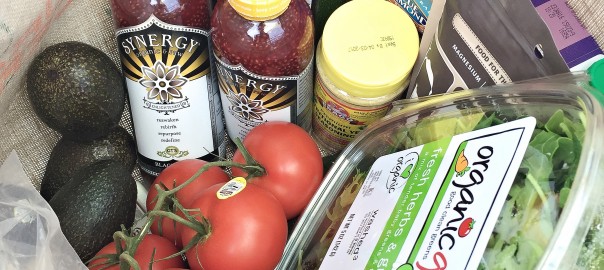Ryan and I travel A LOT! We travel mostly for work yet we also love to vacation. So how do we stay Fit and travel?
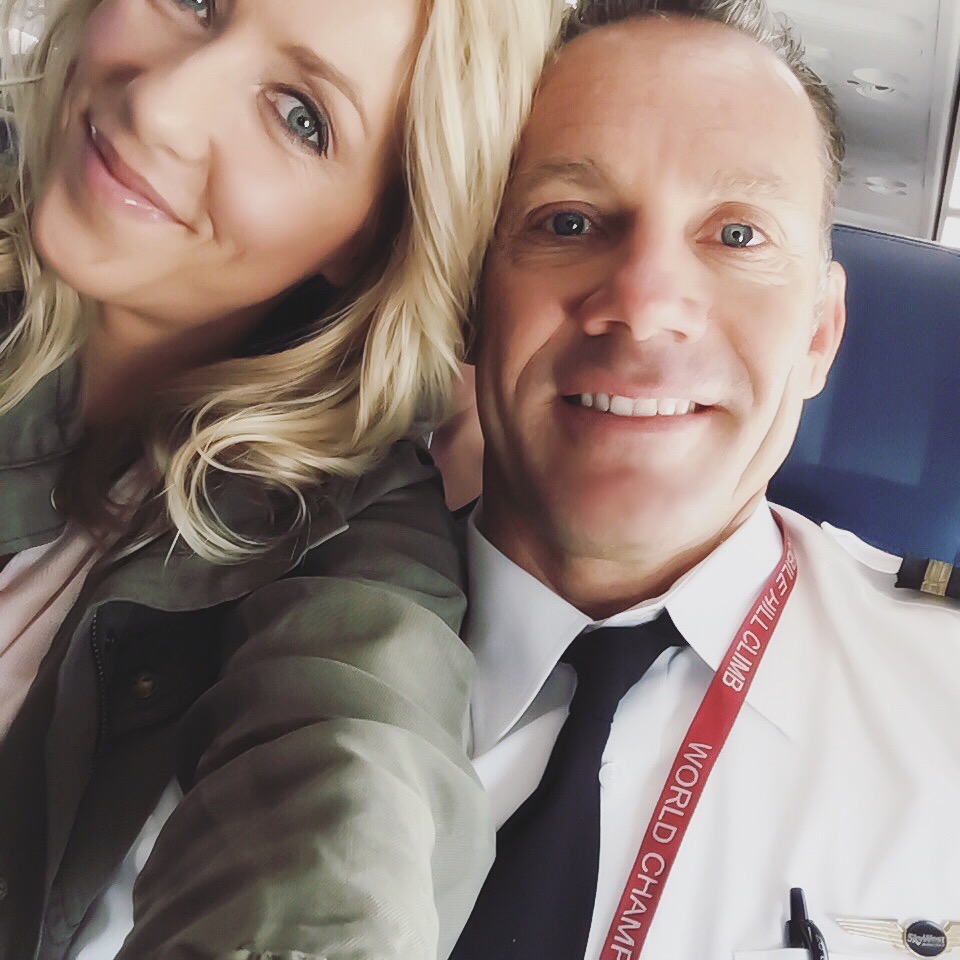
We understand that trying to eat healthy while traveling is one of life’s greatest challenges and so we thought you’d appreciate what we are about to share here.
We’ll be the first come out and say traveling totally sucks.
I mean, let’s get real here. Dealing with flight changes, disgruntled passengers, lost luggage, time changes, and being away from the conveniences of home isn’t exciting.
What is, however – is the experience of being there. Because of this, we’re all willing to make sacrifices to either keep our job, visit family, or take a vacation. And a lot of the time, those sacrifices include eating foods that are less than ideal.
Although your eating won’t be perfect, there are a number strategies to help you eat healthy while traveling in order to reduce the already existing stress on your body.
Because “travel” looks different depending on the destination, you can adapt the strategies below to your situation – whether that includes flying, car trips, bus rides… or all three. (And if that’s the case… bless your heart.)
How to Eat Healthy While Traveling: Before You Go
PREPARE! I can’t stress this enough. Here is a list of things Ryan and I eat on the road and/or on the plane.
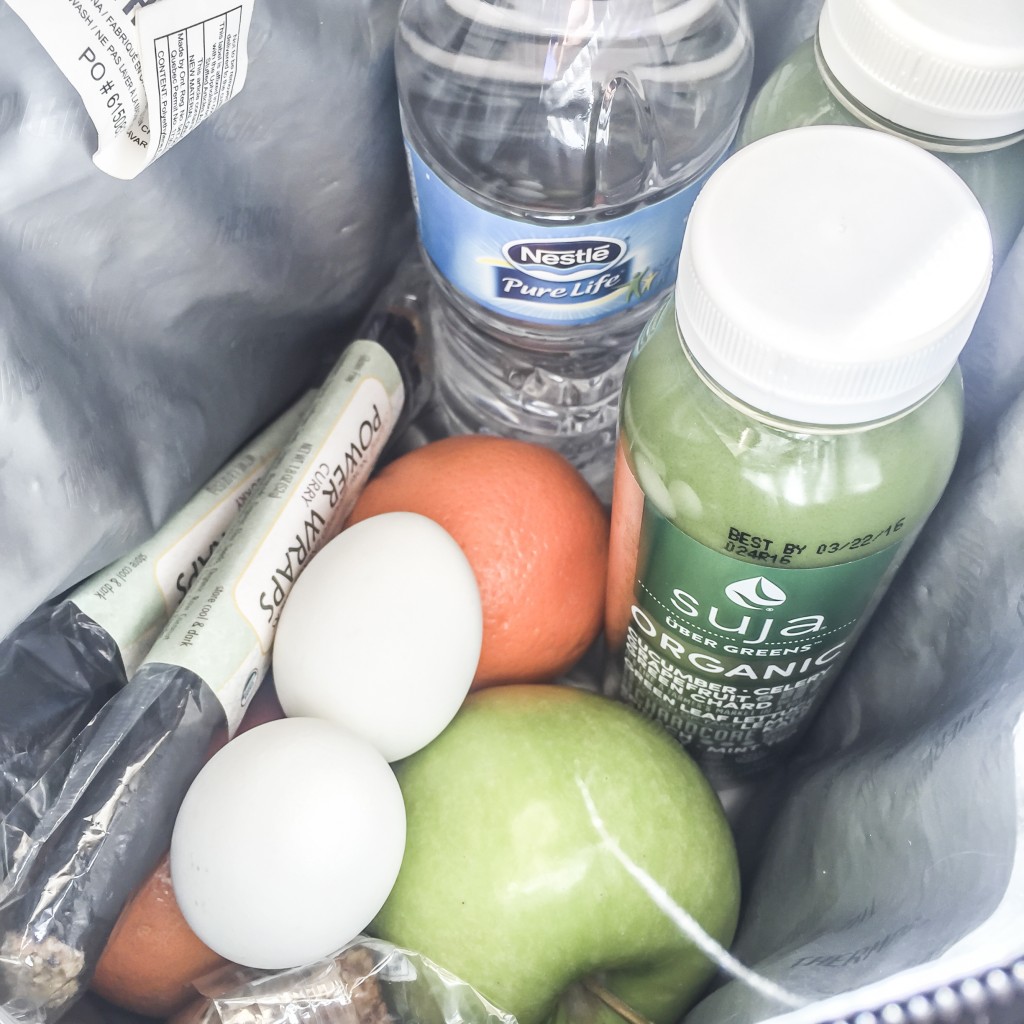
The List (shown above):
Boiled Eggs
Sea Salt
Fresh fruit
Power Wraps
Lara Bars
Water
Suja’s
Additional items:
Pre-made Smoothie from home
Grilled Chicken Breast
Mashed Sweet Potatoes
A Pre-Made Salad with a Lemon for the dressing
Baby Carrots and Raw Goat Cheese
Avocados
The water and Suja’s are great to take with you on the road. Yet won’t pass security if you’re going airborne.
A great idea to get a green smoothie or freshly made juice to pass through security is to FREEZE it. Of course you won’t be able to dive into it as soon as you like yet you can use this to keep perishable foods fresh and in a few hours enjoy an ice cold beverage.
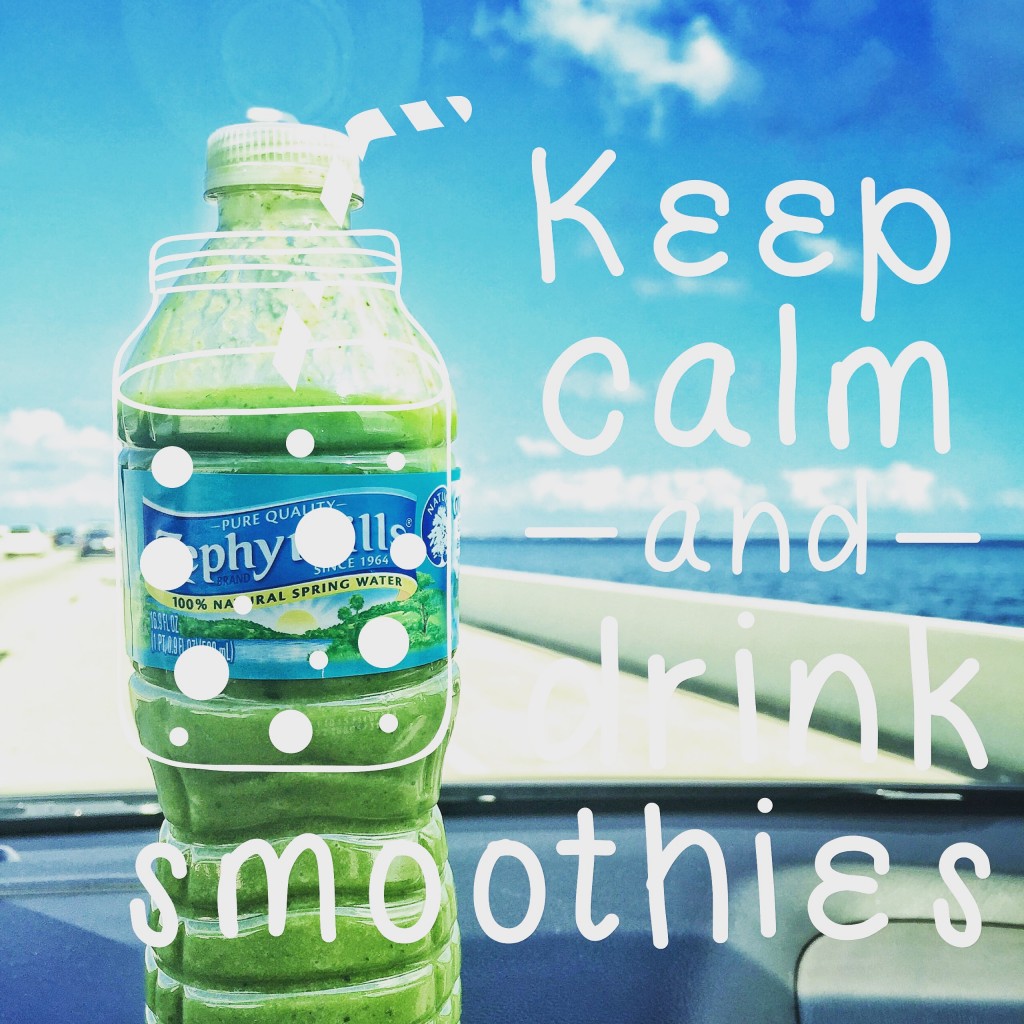
The last thing I want to do is DISHES when I travel so if your going to pack a smoothie or a juice from home or the hotel, pack them in a recycled water bottle. You can rinse them out and toss in the nearest recycle bin at the next stop.
The Hotel
Always prioritize staying at hotels that offer a mini-fridge in the room. Not only will you be able to house health-promoting foods in your room for easy access, but you’ll also save big money by bringing your own breakfast, lunch and/or snack foods which can add up quickly while traveling.
Also, if you’re looking at a few different hotels, search each of them in google maps prior to booking to see how close they are to surrounding grocery stores and markets. The closer they are, the easier it is to make a stop or two throughout your trip.
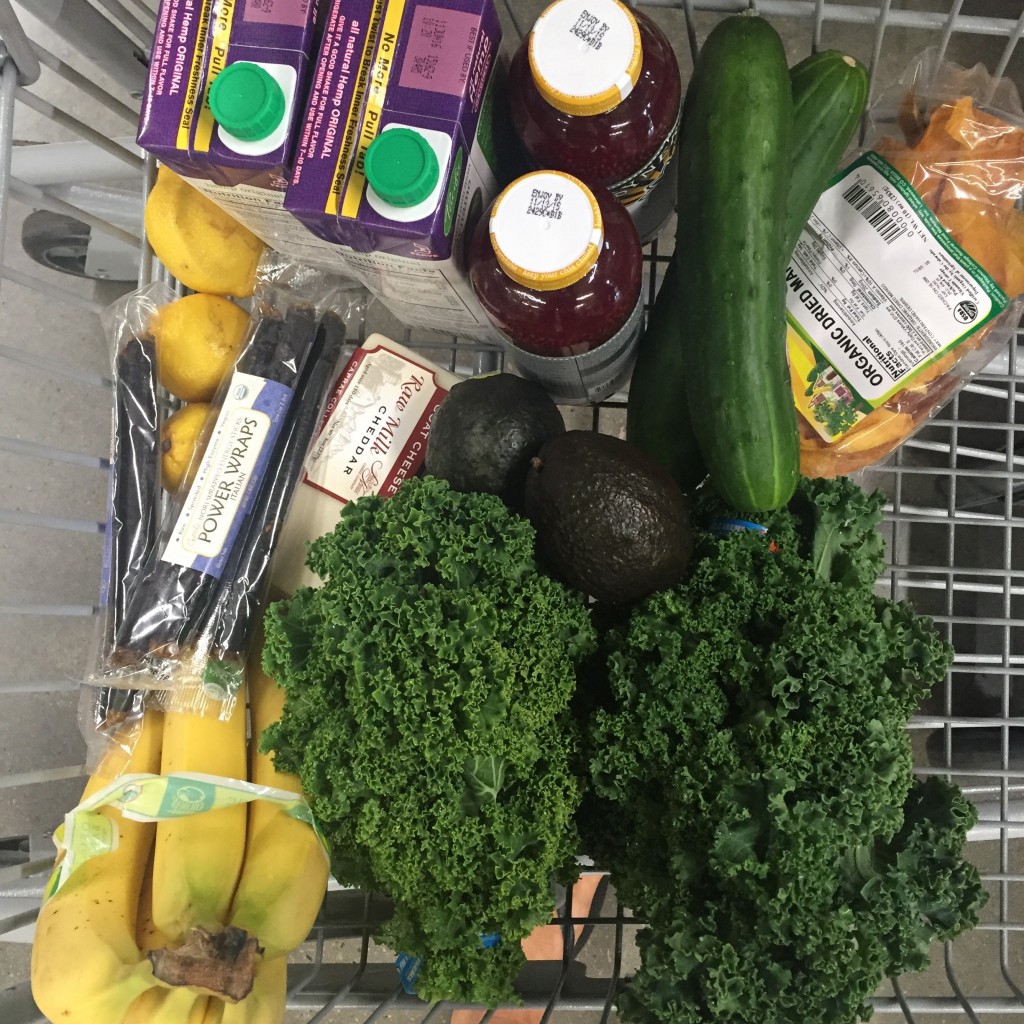
Although typically not the best quality food, it’s good to check out hotel breakfast options ahead of time to see what foods might be available to you. Stocking up on hard-boiled eggs or fruit from the breakfast buffet can serve as breakfast or snacks during your trip.

Last, pack a blender for those long trips. I promise the extra effort will be worth it. Buying freshly made smoothies and/or juices at a juice bar add’s up quickly. You can pay up to $10.00 for a 16 ounce juice vs $3.00 for one you can make yourself in your hotel room. CHEERS!
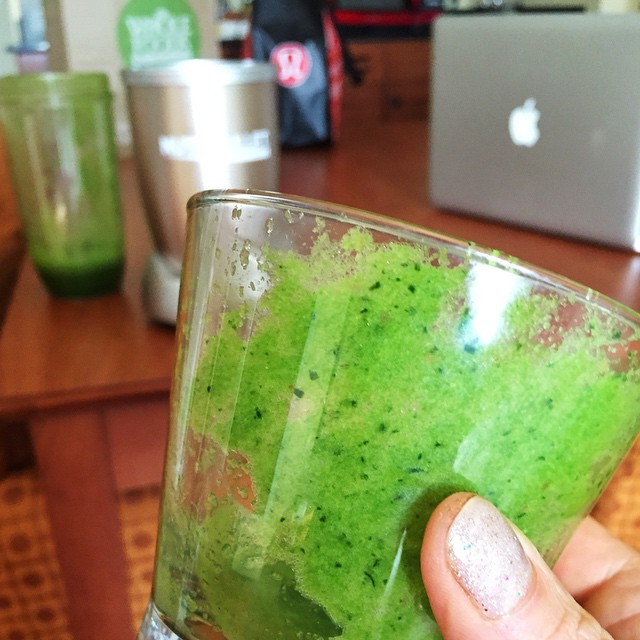
The Food
You can easily take a variety of perishable and nonperishable items with you depending on the length of your trip, and how much room you have to pack food.
Perishable foods
For perishable foods, you can use a cooler or a cooler “shoulder” bag along with gel ice packs to keep foods cold during your travel time. When flying, if you’re unsure if your ice source is security-friendly, take a large ziplock bag and get ice from a drink shop once you’re in the terminal OR use a frozen pre-made juice from home.
For flights that include long layovers or in-flight meal services, it’s best to prepare a meal to-go before leaving the house. Dry foods are perfectly acceptable to take in carry-ons, so take as much as you need. Mr. Belliston and I typically pack a big salad OR our famous RAW SUNFLOWER SPREAD with celery sticks or made into Sushi Rolls to eat on the plane during meal time. This means we’re usually full and happy until we’ve settled in at our destination.
Non-perishable foods
Packaged foods or foods that don’t need immediate refrigeration make great emergency meals and snacks, especially when spending time overseas or working long hours away from the hotel for work. You can pack large stashes of these foods in your suitcase, and take what you’d like in your carry-on for immediate use.
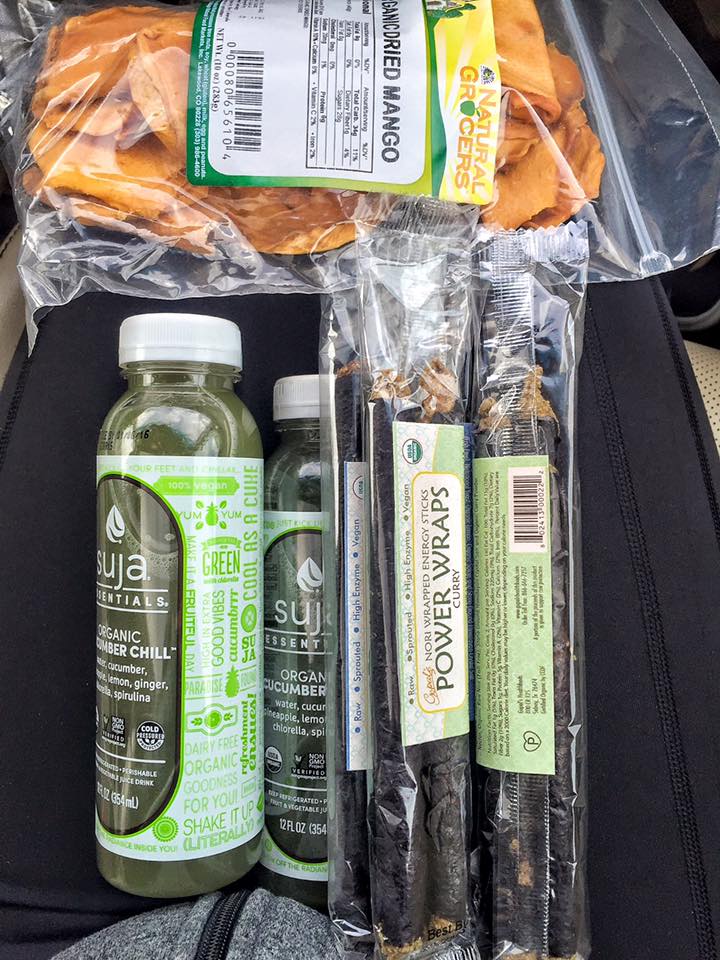
Options for travel-friendly “no fridge” necessary foods:
- Raw nuts and seeds
- Avocados
- Veggies
- Raw Power Wraps
- Dried Organic Un-sulphered Fruit
- Fruits like apples, bananas, and “cuties”
- Pink Himalayan Sea Salt (I always have this with me)
- Dark Chocolate
Enjoying new foods to the fullest in unfamiliar locations can be a simple as throwing a few things in your bag or purse on the way out to eat.
The Accessories
A few travel-friendly accessories like reusable forks, plates, a small sharp knife, and cloth napkins will help as you prepare and eat your food throughout your stay. You can also take a travel bottles of Dr. Bronner’s Liquid Castile Soap to rinse your utensils and containers in the sink after using them.
I also highly recommend taking your own reusable (non plastic) water bottle and coffee mug to use throughout your trip. This will eliminate the cost and waste of endless amounts of plastic water bottles and cups that can add up while traveling. If flying, you will need to empty your water bottle before going through security.
Don’t be shy about taking any other small conveniences that make you feel comfortable and happy. This includes supplements you might be taking like magnesium or probiotics, or bags of your favorite tea you like to drink in the morning. Especially when traveling frequently for work, keeping a semi-normal routine is crucial to overall health and longevity.
How to Eat Healthy While Traveling: The Arrival
Whether traveling in your own car or by taxi, plan to stop at the grocery store just before reaching your hotel or at some point shortly after you arrive to get items you weren’t able to bring. This is also the time to pick up large bottles of purified water that will last you throughout your trip.
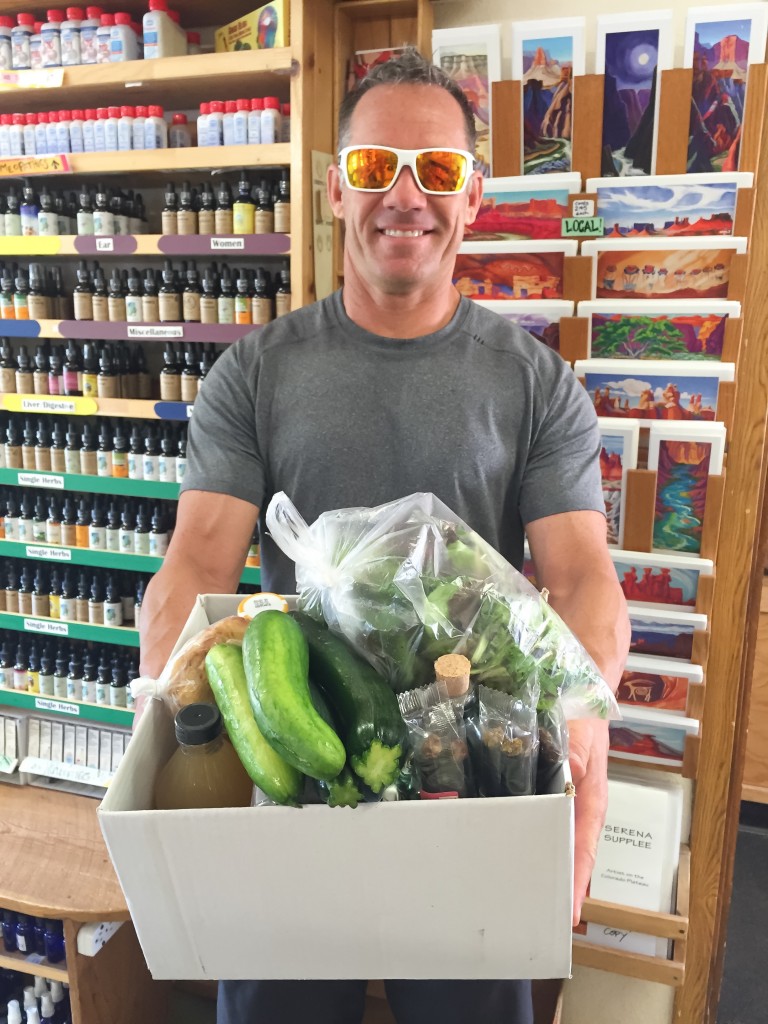
If the mini-fridge is more “mini” than expected, you can use your cooler or cooler bag and refresh it with hotel ice every 6-10 hours as you eat the food and free up room in the fridge. Make sure to turn the fridge to the coolest setting if you are packing it full with food as most hotels will have it set to the lowest setting when you arrive.
Throughout your stay, you can use the airtight containers you brought to pack fresh food to take with you out each day. If you’ll be gone from the hotel all day (which most of us are) for work or to explore, you can take these containers in a shoulder bag like a purse or backpack along with your reusable water bottles, coffee container and utensils.
Restaurants
Whether traveling for vacation or work, experiencing new, local cuisine can be the highlight of any trip. Luckily, you can enjoy the food at a majority of the restaurants you’ll visit by follow a few key “tricks” of the trade:
- BEWARE THE BREAD BASKET! I LOVE BREAD and I WILL EAT IT if it’s in front of me. Remove any temptation (this includes chips too) ASAP! Focus on the conversation, and order a glass of red wine or tea to keep your hands and mouth busy.
- When you arrive at a restaurant, tell the waiter you are gluten-free (or dairy-free) and would appreciate their help in making substitutions. Most of the time, they’ll make immediate recommendations and let the chef know your sensitivity.
- When ordering salads, simply ask to sub the dressing for a side of olive oil (if you didn’t bring your own!) Ask them to hold any croutons or cheeses if you’re choosing to avoid gluten and processed dairy.
- You can order any burger dish by simply asking them to hold the bun, and leave any sauces on the side. If you’d like to avoid the items fried in vegetable oils, sub out the fries for other sides they offer like grilled vegetables or rice.
- You can order any entrée dish that includes meats like steak, fish, or chicken by simply asking for “double the veggies” as your side instead of any gluten or processed dairy items.
- If you’re trying to avoid vegetable oils, ask if there is an option to have your meat or vegetables cooked in butter instead of the typical canola oil or no butter or oil.

Don’t worry. Be happy.
While all of these tips can help you eat healthy food while traveling, the most important thing you can do throughout your trip is to not stress about food imperfection. In fact, one of the number one causes of digestive distress is stress. This means, you could be eating the most nutrient-dense, pristine diet there is – but if you’re stressed, you’re not only impairing the breakdown and absorption of your food, you’re also suppressing your immune system and increasing your likelihood of experiencing a reaction to a gut pathogen or food toxin.
This is especially challenging for us “type As” as perfectionism and the all or nothing mentality typically reigns supreme. In the end, however, that mentality will only do more harm than good.
In short, enjoy yourself and the opportunity you’ve been given to have a job – or travel and be on vacation. If that means removing all gluten exposures, then by all means, make that happen. Yet, don’t let a little canola oil or non-organic produce rob you of enjoying life experiences.
Got questions about how to eat healthy while traveling? Or – have some other insights? Share your experiences below!
Keepin’ it real,
~Ryan and Kristie “BELLY” FIT

